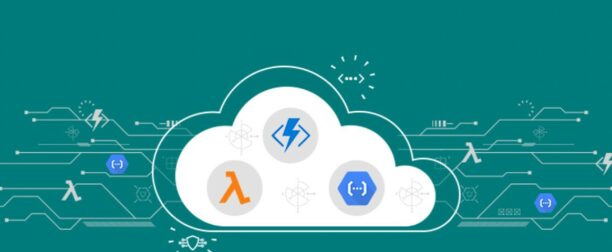
Serverless and headless: What’s the difference?
If you work in the web design space, I’d bet you’ve heard the terms ‘serverless’ and ‘headless’ a lot. (And, if you haven’t, no, this isn’t a horror movie!)
Serverless and headless are two of the most commonly used terms in the world of web design—in fact, they’re often used interchangeably. However, in reality, they’re two quite distinct concepts and practices—with their own, unique uses.
In this article, we’ll cover the differences between these two computing methods—along with how to make the most of them. Let’s get into it!
So, what is serverless?
In short, serverless is a computing method that is used to provide backend services on a ‘pay as you go’ basis. It enables users to write and execute frontend code without having to worrying about the underlying infrastructure.
Generally, the backend services from a serverless provider are charged on the basis of the total amount of computation—rather than the number of servers and the bandwidth. This makes it an auto-scaling service.
The name is, admittedly, slight deceptive: while called ‘serverless’, this method does actually use physical servers—the term actually refers to the fact that site developers and/or clients don’t need to manage them.
Traditionally, when a developer wanted to build an application, they had to have the physical hardware on which to run the server—which was often expensive and a complicated job to manage. However, with the introduction to cloud computing, a developer can now easily rent any number of servers, and the server space, remotely—without having to host it themselves.
However, there is a danger here for unwary companies or web developers. Concerned about traffic spikes, they may tend to rent a lot of extra server space to prevent their sites or applications from going down just in case web traffic booms. This ‘extra’ server space often goes unused—and can end up a very, very expensive exercise indeed.
This is where the serverless concept comes into play.
The advantages of going serverless
The main advantage of serverless computing is it allows you to purchase the backend services on a ‘pay as you go’ or ‘as used’ basis—effectively meaning you only pay for the services you actuallyuse, not what you think you might use. Thus, web hosting becomes not only less complicated—but much more cost-effective too.
This allows the developers to work freely without worrying about server maintenance. One of the best examples of the serverless computing method is AWS Lambda—which is Amazon’s offering to the world of serverless computing.
Reminder: While the term “serverless” might seem a bit confusing, as there are still servers that offer these backend services to the developers, remember that the term refers to the fact that the underlying infrastructure is handled by the provider and not by the user.
Applications of the serverless computing method
For scalable APIs: Serverless computing method can be used for building scalable APIs. By using varying, rented server spaces, different parts of your API will scale separately depending on the usage level. This allows you to have a highly flexible and cost-effective API setup!
For data processing: Serverless methods are great for efficient and relevant event-based data processing. For example, with AWS Lambda, you can integrate your data sources—and a specific Lambda function will be triggered for a particular data event.
For task automation: You can use serverless computing to make ‘mundane’ tasks a breeze—from running or scheduling automatic jobs, moving your data around data stores, processing data forms on a website, etc…
So, what is headless?
The term headless comes from the image of a head that has been chopped off its body—weird, but true!
To bring it out of realm of horror back into the world of web design, headless refers to the concept of the frontend (i.e. the ‘head’ of the website) being cut off from the backend (i.e. the ‘body’ or content repository).
While it might initially seem disconnected, this headless computing method attaches an interface that allows you to add content, along with and the APIs like XML or JSON, in order to deliver the content you need.
The advantage of going headless
By using this approach, you don’t have to worry about where or how your content is displayed—you can focus your attention on the critical components of creating, storing and delivering your content. Nice!
Applications of the headless computing method
- For building any website that uses the technology you’re familiar with.
- For building websites and applications that use a Javascript framework.
- For building websites with static site generators like Middleman, Jekyll etc.
- For developing mobile applications for Android, iOS, Windows etc.
- For improving eCommerce websites
Moreover, headless computing is not just limited to the websites. It can be used for delivering content directly from the API whenever you need it.
Should you go serverless or headless?
With serverless, you don’t need to worry about the underlying infrastructure which is a massive timesaver. Meanwhile, the headless approach allows you to focus the majority of your attention on how and where your content is displayed, as it separates the website from the backend.
Ultimately, both serverless and headless offer cost-effective and ease-of-use solutions—so feel free to contact me if you’d like to talk through the best option for your business, site or organisation!
Write a comment
Strategist.
Tech Lead.
Digital Marketer.
Feel free to ask if you have a question.
Enter your email below to get our latest posts!